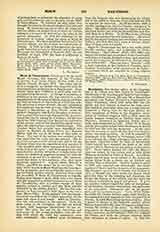

Mariana, Archdiocese of (MARIANENSIS), Situated in the center of Minas Geraes, the great mining state of Brazil, is bounded on the north, south, and west respectively by its suffragan sees, Diamantina, Pouso Alegre, Goyaz, and Uberaba. The city of Mariana, formerly Ribeirao do Carmo (population over 6000), established in 1711, lies about seven miles east of Ouro Preto, the former capital of the state. A bishopric was erected there in December, 1745, by Benedict XIV, the first occupant of the see being Frei Manoel da Cruz (1745-1764), who was translated from the Diocese of Maranhao. For over a century Mariana was the ecclesiastical center of Minas Geraes. In 1854 some parishes were detached from it to form part of the new Diocese of Diamantina, and others in 1900 on the establishment of that of Pouso Alegre. In May, 1906, Mariana was made an archdiocese, having previously been a suffragan of Rio de Janeiro. It embraces an area of 110,000 square miles, nearly one-half of Minas Geraes, and contains over 2,000,000 Catholics, there being only about 2000 Protestants, mostly foreigners in the mining centers. It has 311 parishes, and 611 churches or chapels, served by 545 secular and 104 regular priests. The theological seminary is under the care of the Lazarists. The present occupant of the see who is the ninth ordinary of Mariana and the first archbishop, Msgr. Silverio Gomes Pimenta, was born at Congonhas do Campo, near the celebrated shrine of Mattosinhos, on January 12, 1840; he was ordained on July 20, 1862, at Sabath, by Bishop Vicoso, And for many years professed history and philosophy in the diocesan seminary; named coadjutor to the Bishop of Mariana, he was consecrated at Sao Paulo by the Archbishop of Rio de Janeiro on August 31, 1890, as Titular Bishop of Camachus in Armenia. On April 16, 1897, he succeeded to the see on the death of Msgr. Correa de SA y Benevides. Msgr. Pimento is the first native of Minas Geraes to rule this bishopric, all his predecessors except Msgr. Benevides, having been Portuguese by birth.
From 1711 till 1897 the capital of the state was at Ouro Preto near Mariana, but it has now been transferred to the new and rapidly growing city of Bello Horizonte, founded in February, 1894. It is situated on the west side of the valley of the Rio das Velhas, and lies 390 miles northwest of Rio de Janeiro. It has a population of about 17,615, of whom 17,490 are Catholics. It has five churches, and a college in charge of nuns for the higher education of women. A large cathedral is being erected there. Many laymen and clerics distinguished in science and literature are natives of or have labored in the Diocese of Mariana. Among them may be mentioned the following priests: Jose Basilio da Gama (1740-95), the author of the epic “Uruguay“, a work which unfortunately pays no tribute to the labors of the Jesuits, of which body da Gama was a member before the suppression; Jose da Santa Rita Durao (1737-83), a Jesuit born in Infeccaoado, Minas Geraes, a brilliant novelist and author of the famous poem “Caramuru”; Felix Lisboa, the sculptor; Jose Mariano da Conceccao Velloso (1742-1811), the great botanist, author of “Flora Fluminese”; Jose Correa de Almeida, b. September 4, 1820, at Barbacena; d. there, April 5, 1905, poet (23 volumes published) and historian; Bishop de Sousa, of Diamantina, author of “O Lar Catholico” and other works well known in Brazil, is also a native of the diocese.
A. A. MACERLEAN

